Weight training for beginners
Maybe you want to lose those extra kilos? Build some muscle? Or just get in some better shape? Maybe you wonder if weight training could be what you are looking for? But maybe you are getting confused or paralyzed with all the choices and training programs? How many sets should you pick? How many reps? Does it matter? Bodyweight, Kettlebell, Barbell or dumbells? Thinking that you maybe are too old to start? Or too out of shape?
We have been doing different types of weight training throughout the years and pick up one or two clues on what is working and what is not. But instead of solely based this post on our experiences, we took some time and read through some of the research on the topic.
Hopefully, this can help you on the way in figuring out how you should incorporate weight lifting into your workout routine.
There are tons of benefits to weight training. Research shows that only a few sets a couple of days a week will in most cases be sufficient and give you great results. Research also shows that you will get great effects from only one set per exercise and training day. Furthermore, research shows that training 2 times a week is better only once a week.
Training in the 8-12 reps range will give you both hypertrophy (growth) and strength increase that will help you burn fat and help you in your everyday life. But it could be a great idea to start with even lower weights until you master the technique. You don’t need to train to failure but it is important that you push your self and use challenges weights.
Table of Contents
Why weight training?
Deciding the type of exercise to engage in depends on your health and fitness goals (burn calories, gain strength, build muscle mass). If you are looking for a complete training to boost your fitness, keep you active while also relishing a healthy challenge to toughen you up. Without a doubt, weight training is the exercise program for you. Weight training helps you become “antifragile”.
Before you decide, you’ll be thrilled to know that apart from increasing strength and building muscle mass. A weight trainer enjoys fat burning, quality sleep, improved immunity, and many more natural health benefits for your body.
Weight training is a type of strength training that makes use of resistances in the form of bodyweights and external weights (weighted bars, dumbbells, barbells, etc) to improve strength and muscle mass.
As a complete and functional strength training regime, it combines training programs such as bodybuilding, weightlifting, powerlifting to improve strength, endurance, and maintain your body functions.
As a beginner, you are probably wondering whether you made the right choice in starting weight training, let’s put that thought to bed. You’ll see you easily made the best choice once you get the full benefits of weight training.
If you’d like yo get started. But don’t know how and need some tips on how to motivate you to get to the gym, check out our post 10 tips for how to start working out and stay at it
Benefits of weight training for beginners
Weight training involves performing specified combinations of sets, tempo, repetitions, exercise types and weights for training the muscles to improve muscle strength, endurance, and growth.
If you struggle with building mental resilience or developing a strong will. Weight training will definitely push you out of your comfort zone, challenge your mental energy and buildup your psyche to resist pain. As you engage with and overcome the combination of exercises necessary for strength building and growth.
The psychological benefits of weight training can not be overstated.
Along with regular training, maintaining a proper diet and getting quality rest, weight training can help battle mental health problems such as depression, OCD, social anxiety, chronic mood swings.
Weight training also helps you manage stress and build massive amounts of self-confidence. Imagine being the fittest and the strongest-looking person at your work or on your commute to work. It gives a great boost of confidence, and besides nobody would want to mess with you for sure.
Some other benefits of weight training include
- Increase in strength, endurance, and muscles size
- Increase in bone and bone mineral density
- Improve cardiovascular health
- Insulin sensitivity
- Decrease blood pressure and burns fat
- Improve balance and stamina
- Prevent degenerative diseases
- Improve posture
To get the best results you should also incorporate a healthy diet. Check out some of our posts on that topic: 7 tips for a sustainable healthy diet and 4 tips to break free from the food scale.
Weight training and weight loss
Quite a lot of people pick up running, cycling or other cardio workouts to lose weight and burn calories.
While you can lose weight by maintaining a proper diet and regular cardio workouts, it is more difficult and they hardly build or tone their muscles.
It is more difficult to lose weight by doing only cardio because cardio training will burn calories while you do it, but only for a short time after.
Cardio will also make you hungry. It not uncommon to eat all or most of the calories close after you are done, so the effect from a fat loss perspective is more or less gone.
Weight training, on the other hand, doesn’t only burn calories during the workout it also burns calories many hours afterward. Another major benefit of weight training over cardio is that weight training builds muscles.
With more muscle, you will burn more calories even when you are inactive or just passively active.
Although weight training is primarily for building strength and muscle mass. Weight training speeds up resting metabolic rates and increases basal metabolism of muscles, while fats are easily burned off not only during the process of working out but during rest periods.
Different rep ranges and effect (strength vs. hypertrophy)
The rep ranges deployed for your strength training depends on your goals (muscular endurance, strength, growth) and your conditioning.
There are 3 popular rep ranges in use today;
The 15+ rep ranges
The rep range is mostly implemented to build muscular endurance and for a beginner working to develop proper form. The effectiveness of this rep range lies in low-load weight use in circuit-style training while using 50-60% of your 1RM.
This rep range is effective at weight loss and increased heart rate. However, if you are looking to gain muscle strength and growth, this range is not for you.
The 8-12 rep range
This rep range is ideal for building muscle mass and hypertrophy with noticeable strength gain. However, there’s little muscle endurance gain while working between 70-80% of your 1RM.
As a beginner, you will experience great muscular hypertrophy in 4-6 weeks of resistance training using this rep range. But to gain muscle strength, you’d have to scale up to the last rep range.
The 3-6 rep range
The goal of this rep range is to lift heavier weights that ensure that you reach failure at or slightly before the 6 rep mark. Building strength is the main benefit of this rep range with slight muscle hypertrophy. There is no muscular endurance gain with this rep range.
It is important to develop a good foundation and form before moving to this rep range.
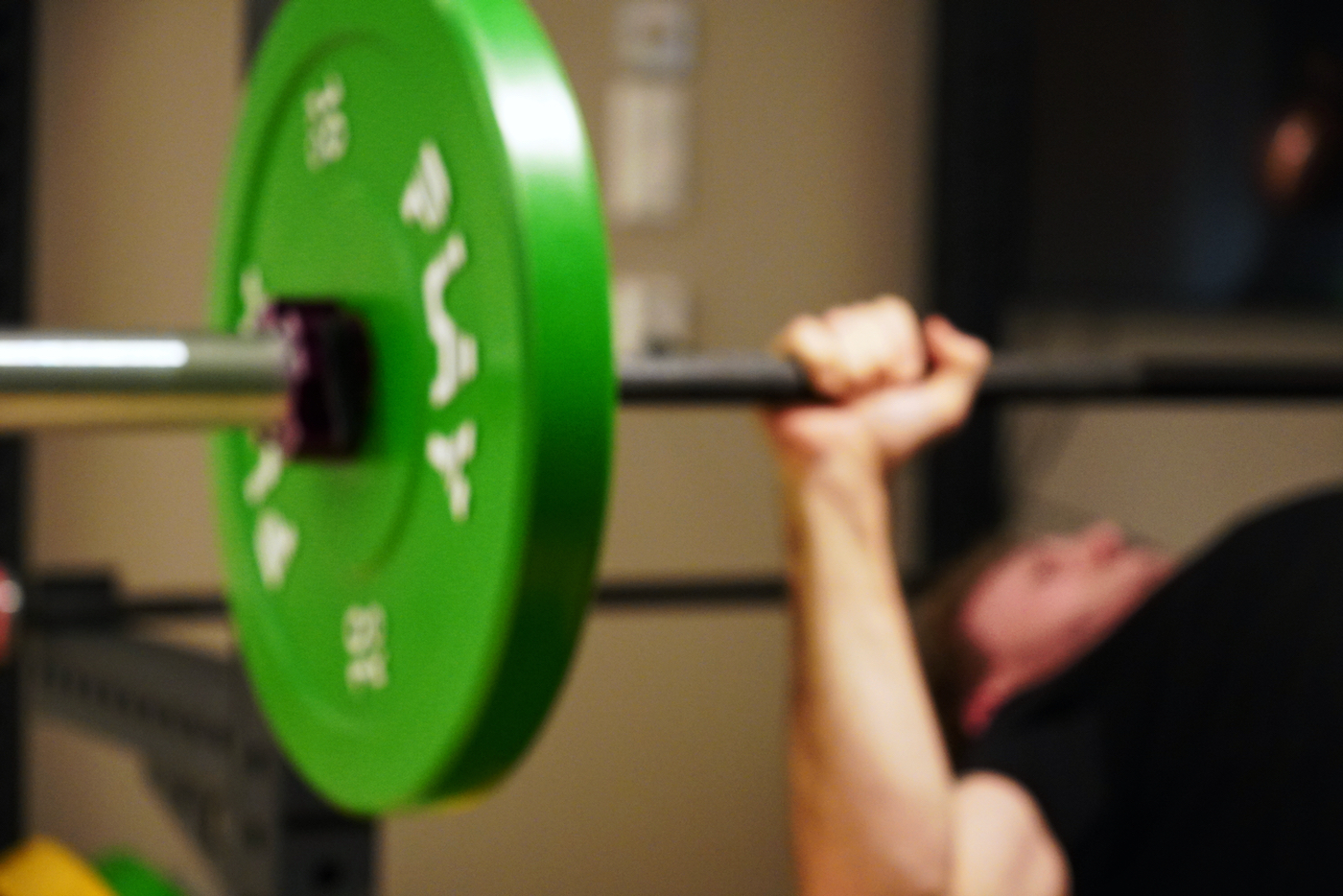
When deciding your rep ranges
Start your weight training journey with the least amount of resistance. Gradually work your way up improving form and building muscle endurance as you go along.
When deciding your rep ranges, make sure you design a sustainable, long-term routine. A properly designed weight training routine does a whole lot to motivate and encourage you to put in the effort to achieve your weight training goals. Also, make sure your routine is safe and engaging.
The frequency of your training, the volume, and the load or intensity of your training are inter-related factors that affect your weight training goals-strength and hypertrophy.
And while you would like to ask the age-old question; high reps or low reps, which is better for muscle hypertrophy?
Let’s break down some of the main factors and discuss how they affect muscle strength and hypertrophy with studies and research carried out to measure the effects.
Weight
One of the biggest questions many beginners have regarding their weight training program is how weight (heavy and low) affects muscle strength and hypertrophy.
A meta-study carried out by Dr. Schoenfeld in (2014) analyzed the strength and hypertrophic effects of weights on different groups of muscles in the body.
The studies were divided into 2 categories, strength and hypertrophy;
In the first category for studying muscular strength, there were 251 participants, 9 studies were carried out, the result showed that increased strength is proportional to high-load in contrast to low-load.
While the second category for studying hypertrophy with 191 participants and 8 controlled studies also showed that muscle hypertrophy was favored with high-load as compared to low-load.
In the study, the researchers looked at the effect of exercising with weights below 60 percent of 1 RM compared to over 65 percent of 1 RM. Weights below 60 percent of 1 RM are very light weights if we talk about strength training.
With such a weight, you can probably count on about 20 repetitions, while a weight of 65 percent of 1 RM corresponds to maybe 15 repetitions. However, there is a clear variation between different people here. But roughly speaking, we can say in this meta-analysis the effect of training with weights heavier than 15 RM or lighter than 20 RM is compared.
In conclusion, though weights training increases muscular strength and hypertrophy. It must be noted that high-load training contributes more to strength and hypertrophy than low-load training. The heavier the weight, the more longterm muscle strength, and hypertrophy.
As a beginner weight trainer, it’s easy to get excited and tempted to pick up more weight than you can handle. Apart from getting hurt, this behavior leads to fatigue and burn-out. So start small. Start with low-loads to develop proper form and build muscle endurance.
Sets
A study by Radaelli R et al. (2015) was carried out to determine the effects of the number of sets on performance, muscle strength and hypertrophy.
The participants of this study were 48 men with no weight training experience, randomly chosen and assigned to different groups based on the number of sets; group 1- 1set, group 2 -3 sets, group 3-5 sets.
All 3 groups were placed on a weight training program for 6 months. A 5 repetition maximum (RM) was set for all groups on various resistance training exercises; front lat pull down, shoulder press, bench press, and leg press, etc.
The results showed that while all training groups decreased body fat, they got greater strength gains, muscle endurance, and muscle hypertrophy.
There is very little difference between the groups in their training results.
Few of the differences were also statistically significant, but the group that performed five sets per exercise became stronger in shoulder press and front lat pull down. In shoulder press, the group performing three sets per exercise also increased significantly more than the group performing one set.
In other words, the gains with more sets are not very big. Another study that tried to summarize the results from several different studies found that if you perform two or three sets instead of one set, your exercise effect only increases by about 20-30 percent.
Volume
Volume is the total amount of weight lifted during a training session. For example, If you lifted 20kg, 12 reps in 3 sets, the volume of your training in 720 kg (20 x 12 x 3).
So what does this mean for your muscle growth?
A recent study shows the correlation between different weight training volume and muscle hypertrophy in an experiment with experienced weight trainers.
The study showed that in certain muscle groups of the body, the groups of low volume weight training were more effective in increasing muscular strength and hypertrophy than high volume weight training. For instance, low-volume workouts on muscle groups of the lower body were slightly more efficient for muscle hypertrophy than high-volume workouts.
However, participants in groups of high volume weight training experienced an overall increase in muscle strength and hypertrophy. Than participants who carried out a low volume workout.
The conclusion remains that the more work we carry out during weight training, the more the muscle is in stress. High stress and strain of the muscle lead to higher muscular hypertrophy, at least for experienced weight trainers.

What causes your muscles to grow?
It is correct to assume that lifting heavy weights grow muscle. However, understanding the mechanisms and actions for muscle growth equips you with the necessary tools to design an effective weight training routine for rapid muscle growth and strength.
Smooth muscles of the heart, muscles of the intestines and stomach, skeletal muscles are some examples of the many muscles with different unique functions in the body. For weight training, we are only discussing the skeletal muscles, over 650 of them.
Skeletal muscles are thread-like bundles of muscle fibers that contract and relax from synaptic signaling from the motor neurons in the brain.
Muscle proteins initiate skeletal muscle growth and strength from continuous motor neurons signaling.
This process leads to muscle protein synthesis- grow in strength and size.
The brain naturally forms a mind-muscle connection pathway for load, weight, and the volume of your weight training. This is the reason it gets easier to lift bigger weights as you progress in your weight training.
The mechanisms of muscle hypertrophy and their application to resistance training.
You might have come across this word especially relating to exercising and weight lifting; Gains. Well, gaining muscle mass is the topic on everyone’s lips from powerlifters, bodybuilders, athletes, and even casual weight trainers.
A few weeks into training, muscle hypertrophy and strength become the main interest in your training, so let’s breakdown the process of muscle hypertrophy so you can design a bulletproof routine.
At the end of the day, building a more or less muscle mass may come down to biological factors such as genetics, age, gender, diet, environment, etc. These factors affect the rate and amount of muscle mass you are capable of building.
Furthermore, research shows that as you progress with your weight training program, muscle hypertrophy steadily declines and it becomes increasingly difficult for muscles to grow. With this in mind, establish a weight training routine that ensures a steady and gradual increase in muscle strength and hypertrophy.
Studies have proven that the key to muscle hypertrophy is continuous weight training with gradual volume increase, heavier weight, shorter rest time, and increase frequency of training or a combination of physiological and biological factors.
Therefore, the simple answer to muscle hypertrophy is continuous stress. We know that when it comes to the muscles, the body responds to continuous stress by increasing strength and size.
Now, let’s get a bit scientific and consider other factors that lead to the disruption muscles responsible for hypertrophy.
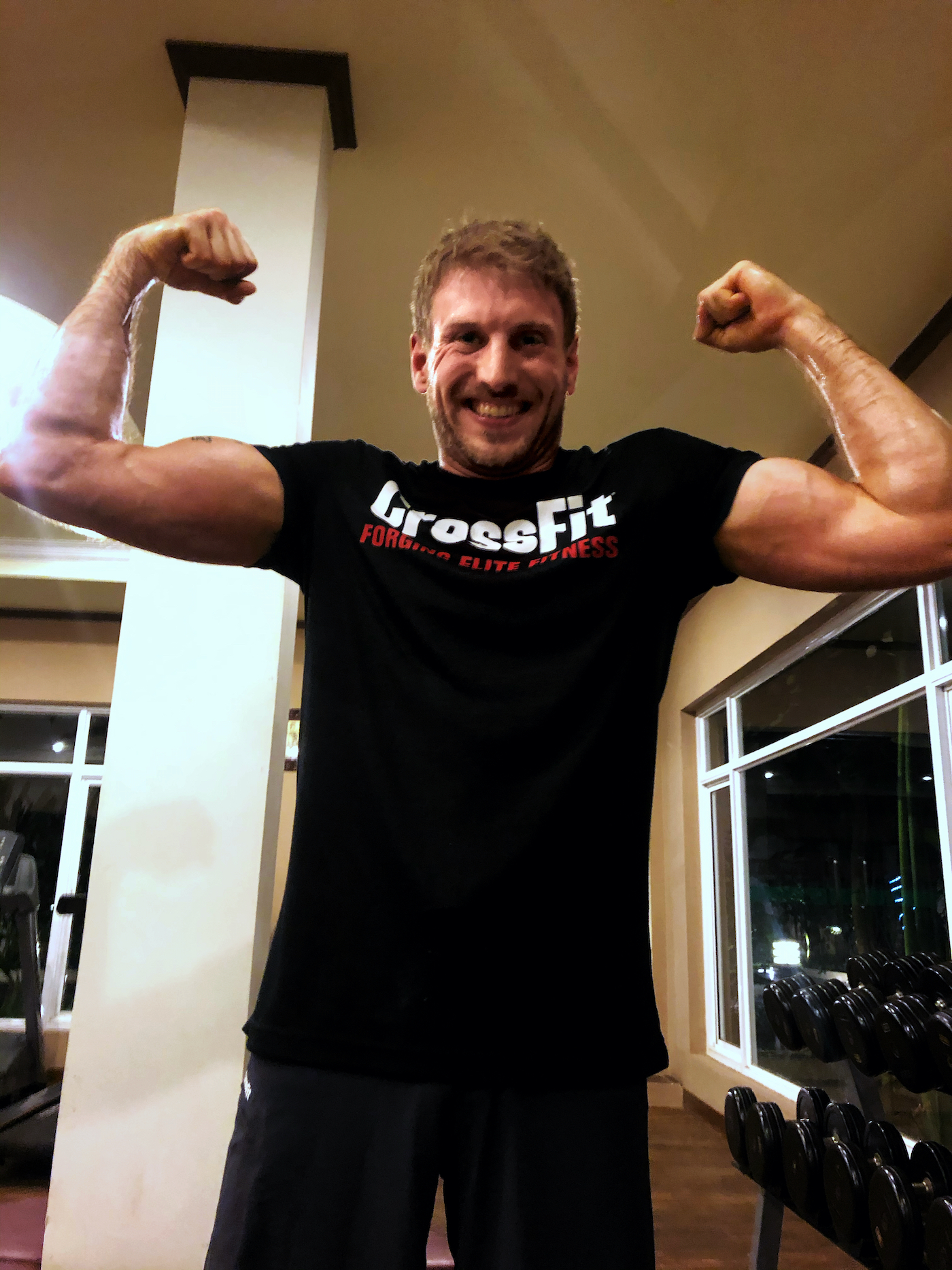
Muscle tension
We already discussed that muscles primarily respond to stress and stress leads to muscle growth.
Studies show that during weight overload, the muscles respond through many different physiological and chemical processes. New muscle cells are quickly formed. There’s an increase in the number of muscle cells that can be broken down in a particular muscle group to initiate muscle growth.
However, while continuous weight overload has proven to be the underlying factor for muscle growth, it must be noted that a combination of factors contributes to muscle hypertrophy. For example, the ability to stimulate the influx of new muscle cells to the muscles for protein breakdown. Such factors are responsible for the rate and amount of muscle gain, especially in resistance training.
Muscle damage
Resistance training causes damage to the muscles just as stress causes the breakdown of muscle tissues. In both cases, the body initiates a cell and tissue repair process which consequently leads to muscle hypertrophy.
The body’s natural response to damage of muscle cells is the release of rapid cell repair and growth factors as though its internal environment is under attack from external factors. This unique physiological and chemical response contributes to muscle hypertrophy during weight training.
Metabolic stress
We have discussed the effects of stress and damage of muscle cells and tissues in initiating hypertrophy. The metabolic stress effects can be experienced in the burning sensation felt during resistance training and the “pump” that you get after training.
Metabolic stress causes an internal environment conducive to the muscle cell and tissue repairs. The body initiates a process that leads to an influx of cells responsible for maintaining homeostasis in the body and an increase in muscle glycogen. This leads to swelling of the muscle group stressed during a workout.
Training to failure
Training to muscle failure has been widely believed to induced muscle hypertrophy. This concept has been proven to be true by many professionals as well as in previous research performed on untrained individuals.
However, new research reveals that training to muscle failure doesn’t guarantee muscle hypertrophy when compared to training to near muscle failure. The research shows a minimal increase in muscle strength and hypertrophy in beginners when the sets are taken to failure.
Conversely, training to near muscle failure produces better results in terms of muscle strength and growth for beginners.
Muscle Failure Promotes Greater Muscle Hypertrophy in Low-Load but Not in High-Load Resistance Training.
We have discussed in previous chapters how muscle hypertrophy is induced in resistance training involving high load and volume as compared to low load and volume.
How does training to muscle failure tie with high/low load resistance training for greater muscle hypertrophy?
A research carried out on beginners, concluded that when training with low loads, training with a high level of effort seems to have greater importance than total training volume in the accretion of muscle mass. Whereas, for high load training, muscle failure does not promote any additional benefits.
The paper classifies a heavyweight load as 80% of 1RM, and lightweight corresponded to 30% of 1RM.
In other words, training to failure could be beneficial with lighter weights. But if you take into account the added fatigue you get with training to failure. You are probably better of stopping a few reps before failure.
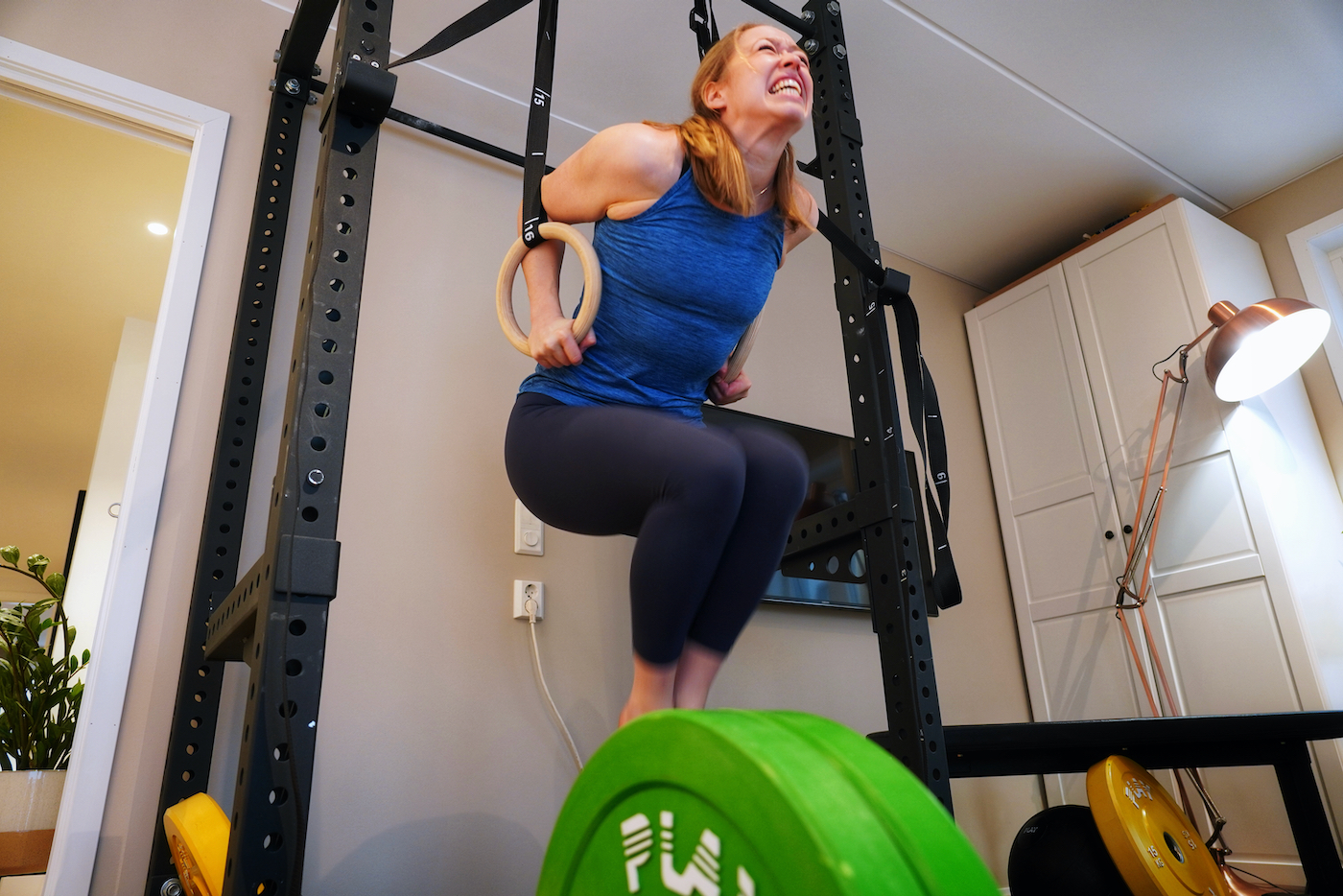
How often should you train?
One of the most popular and hotly debated topics in weight training and you might also have the same question on your mind.
How often should you train?
How do you optimize your training frequency for muscle strength and growth?
A study by Schoenfeld carried out in 2016 comparing the effects of training frequencies (1x per week and high-frequency 2/3x per week) on muscle hypertrophy.
The study shows an increase in muscle growth in higher frequency training as compared to lower frequency training. Higher frequency training leads to a 3.1% increase in muscle mass than low-frequency training.
From the research, frequencies of training twice a week promote superior hypertrophic outcomes to once a week.
It can, therefore, be inferred that the major muscle groups should be trained at least twice a week to maximize muscle growth. Whether training a muscle group three times per week is superior to a twice-per-week protocol remains to be determined.
What exercises should you choose as a beginner?
We have covered the basic principles of resistance weight training, it’s time to hit the gym.
Whatever your goals are, burning calories, toning your abs or strengthing your core. Your routine should be optimized for increasing muscle strength, endurance, and hypertrophy in all or most of your core muscle groups. This helps to build a strong core and robust framework.
Here are the different types of strength training to explore:
Bodyweight training
For reasons unknown, many bodybuilders and weight trainers often neglect bodyweight training in their resistance training after a while of lifting weights. This shouldn’t be. Bodyweight training is the foundation for building strength and growing muscle mass and must never be neglected.
As a beginner resistance trainer, bodyweight training helps you build a necessary and foundational strength for improving your training and growing muscle mass. It eases you into the weight training world and the best part of it is that you can workout anywhere you are. Even right now.
There are essential movements to include in your bodyweight exercises;
- Squats
- Lunges
- Push-ups
- Pull-ups
- Planks
- Chin-ups
- Dips
- V-Ups
You can implement these movements in many different forms and variations based on your preferences.
One big caveat from bodyweight training is that it helps to build strength and stamina before scaling up to more resistance training. It also helps you develop a great form and technique for external resistance training.
Body weights are the basics. You shouldn’t skip bodyweight training, it will do you a world of good in your routine. To get the maximum results from them, focus on intensity and push the limit of your body.
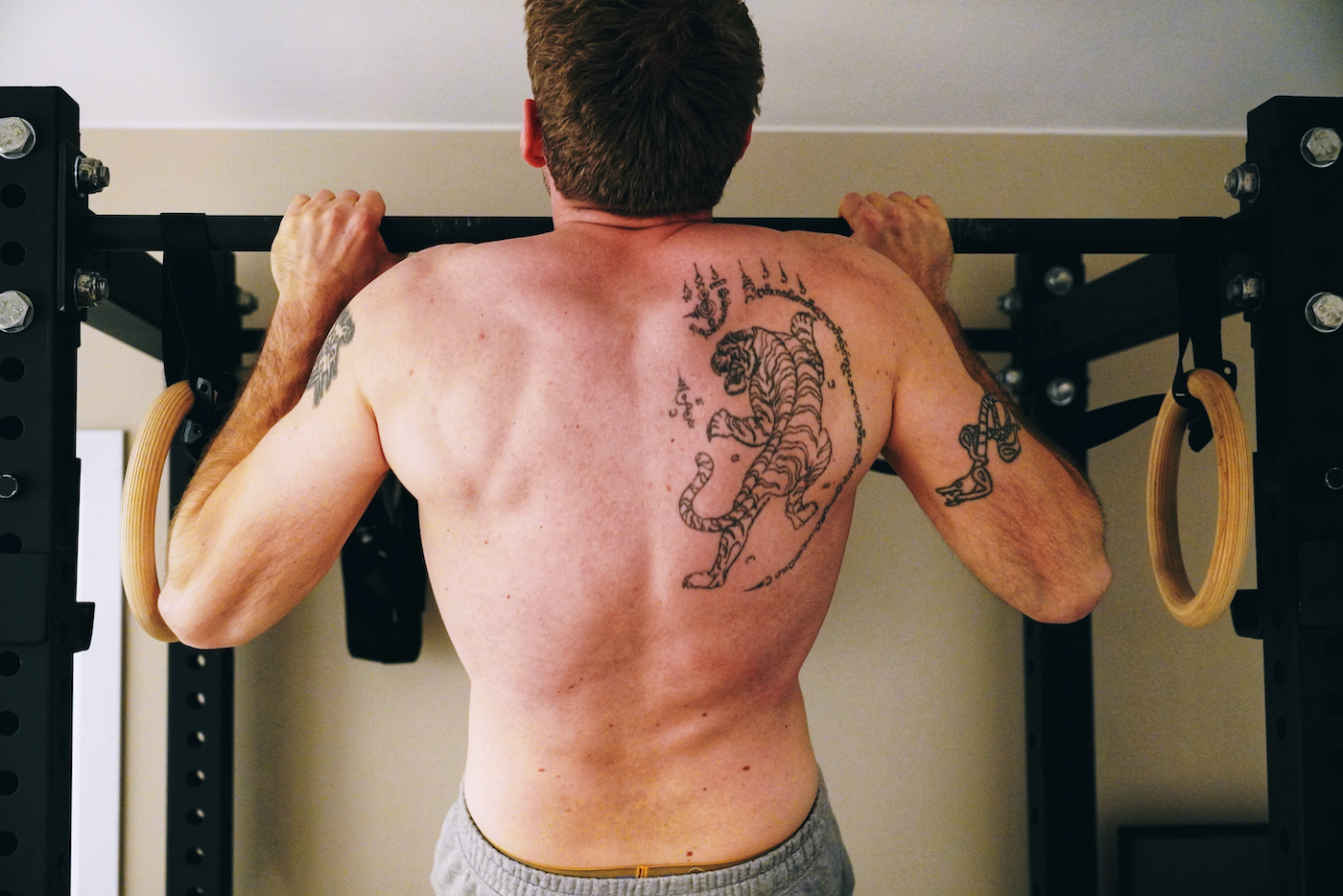
Kettlebell Training
Kettlebells come in different weights and sizes, perfect for resistance training. You can push and pull, swing and even rotate with its handle an grip. Kettlebells are just the equipment you need to increase your muscle endurance and strength. You can work out at home or the gym with a single kettlebell.
Kettlebell exercises help you burn fat while building strength and explosiveness. Even more, you can design workout combinations using a kettlebell to workout muscle groups in the legs, the back, the arms, and the abdomen.
Try out these kettlebell workouts; kettlebell goblet squat, kettlebell one-arm press, kettlebell chest-loaded swing, etc and modify your exercises using a kettlebell to fit your fitness goals.

Dumbell training
Dumbbells are possibly the most popular external resistance training equipment. Just like the kettlebell, they offer you a copious selection of weights and sizes. They also provide excellent resistance to developing muscle strength and endurance.
Dumbbells are perfect for scaling up your resistance training since they do not take up much space, easy to use and implement a variety of exercises. Dumbbells provide an easy, safe and effective way to increase the difficulty of your resistance training.
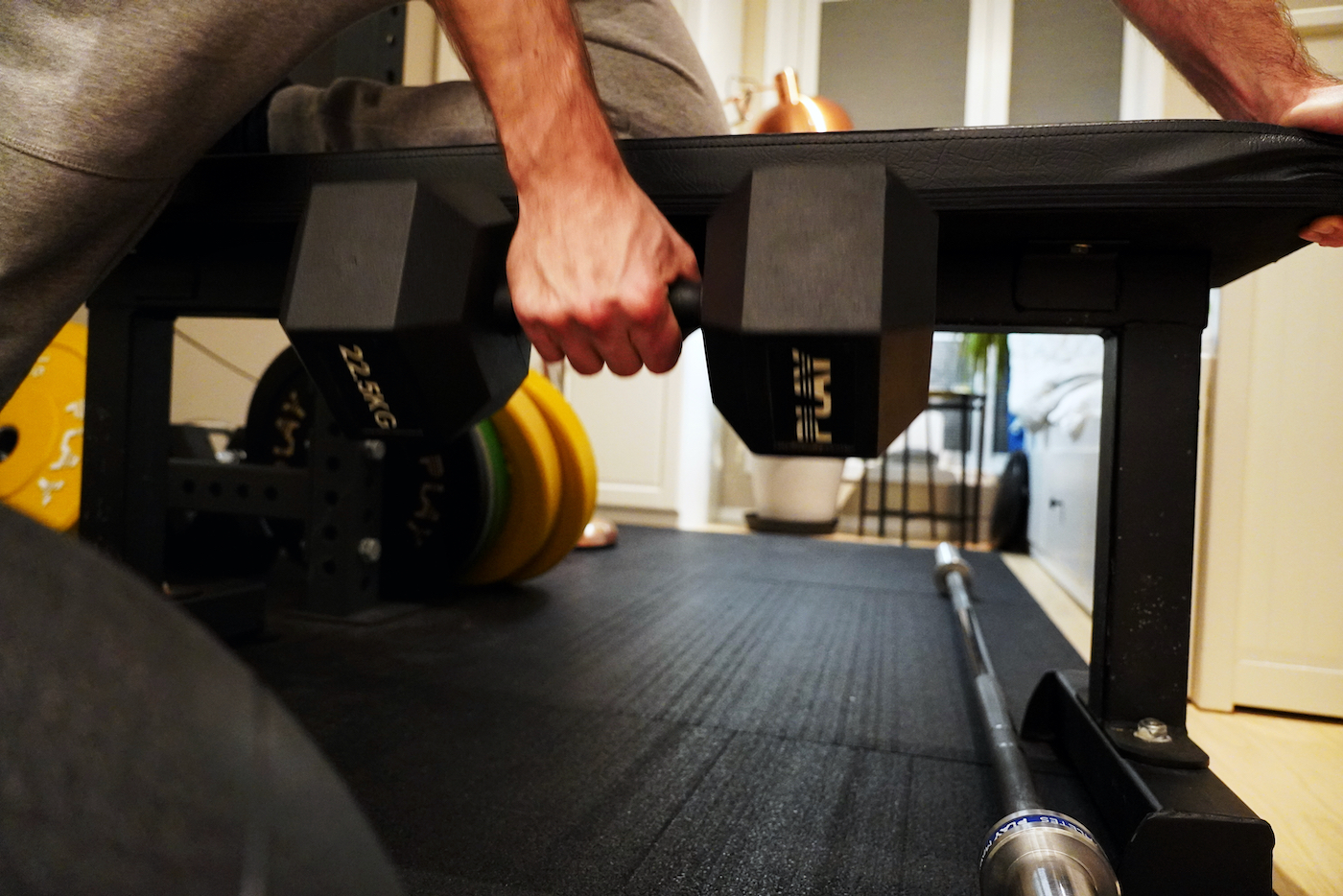
Barbell training
These are the ideal resistance training equipment for building a massive amount of strength at a fast rate.
The barbell is easier to use in the gym and it allows you to implement the full range exercises necessary for building muscle strength.
Barbell training helps you push your muscles to the limit and allows you to increase muscle endurance to build massive muscular strength. Remember, high-load and volume increase muscle hypertrophy.
Common resistance exercises you can implement using a barbell are squats, deadlifts, incline bench press, rows, overhead presses, etc.
A few things to consider:
- Include compound-movement exercises in your routine.
- Combine bodyweight training (dips, pull-ups, press-ups) with heavy (deadlifts, weighted squats, bench press) training for core strength, explosive power, and muscle mass.
Choose a combination of these exercises based on your preferences and fitness goals. The exercises have been divided based on muscle groups.
- Chest: Chest presses, chest flies, pushups, bench press
- Back: One arm row, double-arm rows, lat pulldowns, reverse flies, back extensions
- Shoulders: Overhead presses, lateral raises, front raises, upright rows
- Biceps: Dumbbell biceps curls, hammer curls, concentration curls, resistance band curls
- Triceps: Lying triceps extensions, seated extensions, triceps dips, kickbacks
- Lower Body: Squats, lunges, deadlifts, calf raises, leg presses, step-ups
- Abdominals: Ball crunches, woodchops with a resistance band, planks, knee tucks on the ball, rollouts with the barbell
You’re well on your way to starting your weight training program.
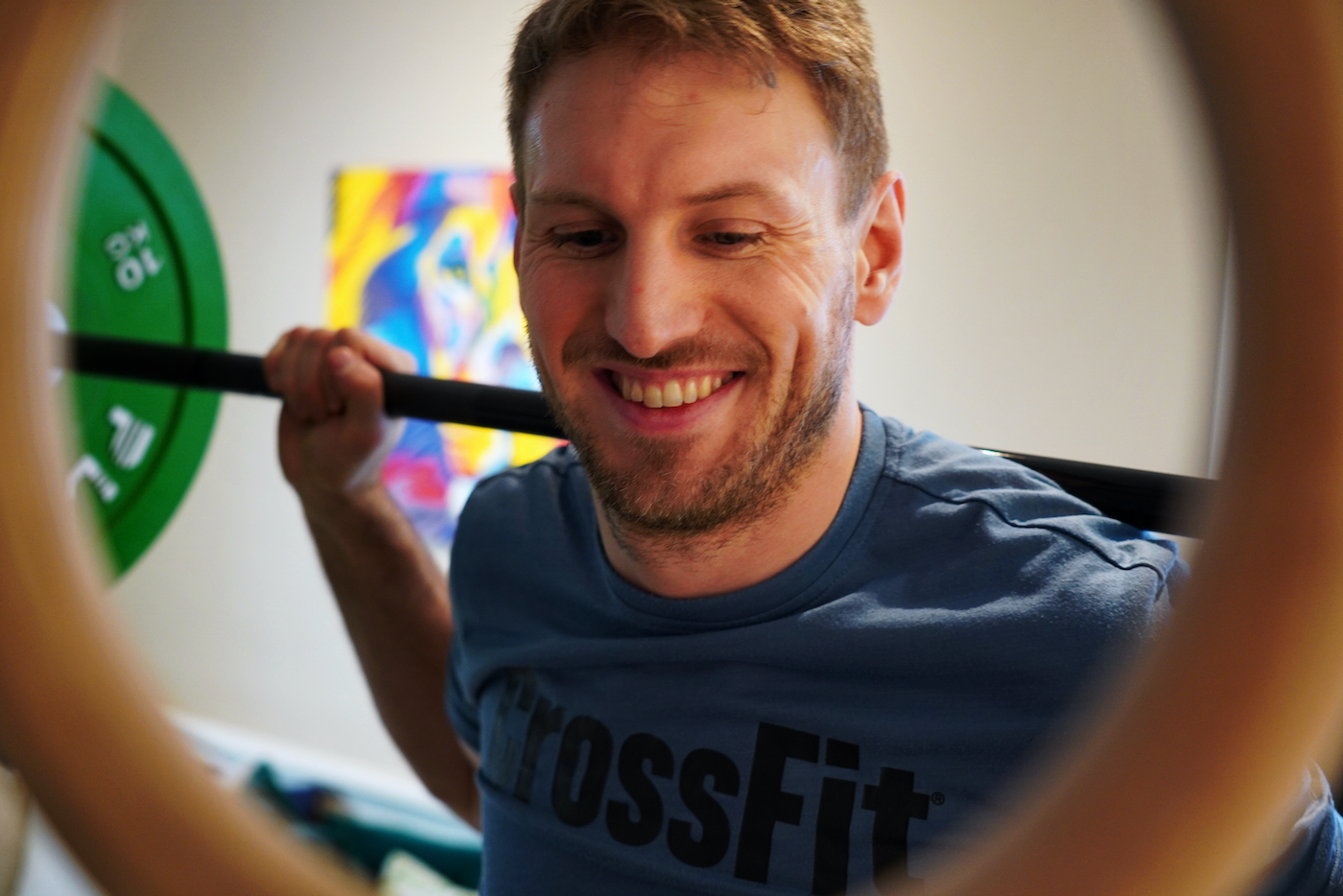
Too late to start?
Along with helping you burn stubborn fat, weight training improves your body’s strength and balance.
It is never too late to start exercising, even the simplest routines add up to here boost your immunity and battle degenerative diseases.
A good and entertaining talk on TEDx by Charles Eugster, 93, on physical activity and healthy lifestyle at a high age. If he can do it at 93 years of age so can you.
This 93-year-old has a message for us: “A beach body at 90 is no longer a dream”
Don’t wait a minute longer, pick up them weights and start working out.
Conclusion
From the research findings, we discovered that a high frequency of 2 or 3 times per week is more effective at building muscle strength and hypertrophy.
As a beginner, your weight training schedule should be a full-body workout at a high frequency 2 or 3 times a week.
A full-body workout allows you to train the same group of muscles at a high frequency 2 or 3 times a week, this helps you build endurance and strength. Incorporate compound exercise to target a wide range of muscle groups and be sure to combine different exercises for maximum effect.
Deciding the ideal number of sets and reps for your routine depends on your fitness goals. Keep in mind that a higher volume and high-load help build strength and hypertrophy faster than low-load and volume.
Finally, even if you are looking to burn calories and lose some weight, during the process of weight training, you gain muscle strength and mass. Neat.

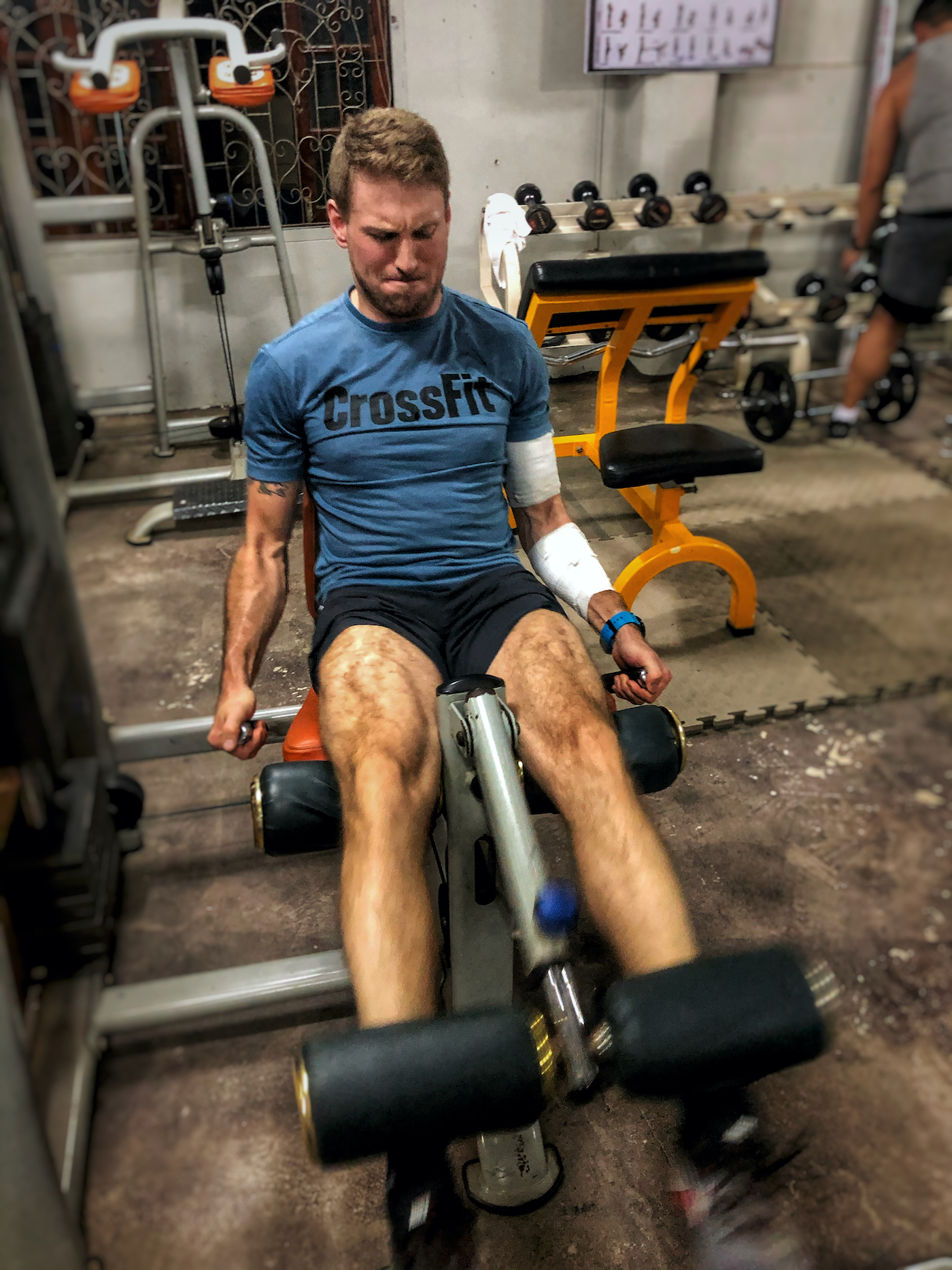



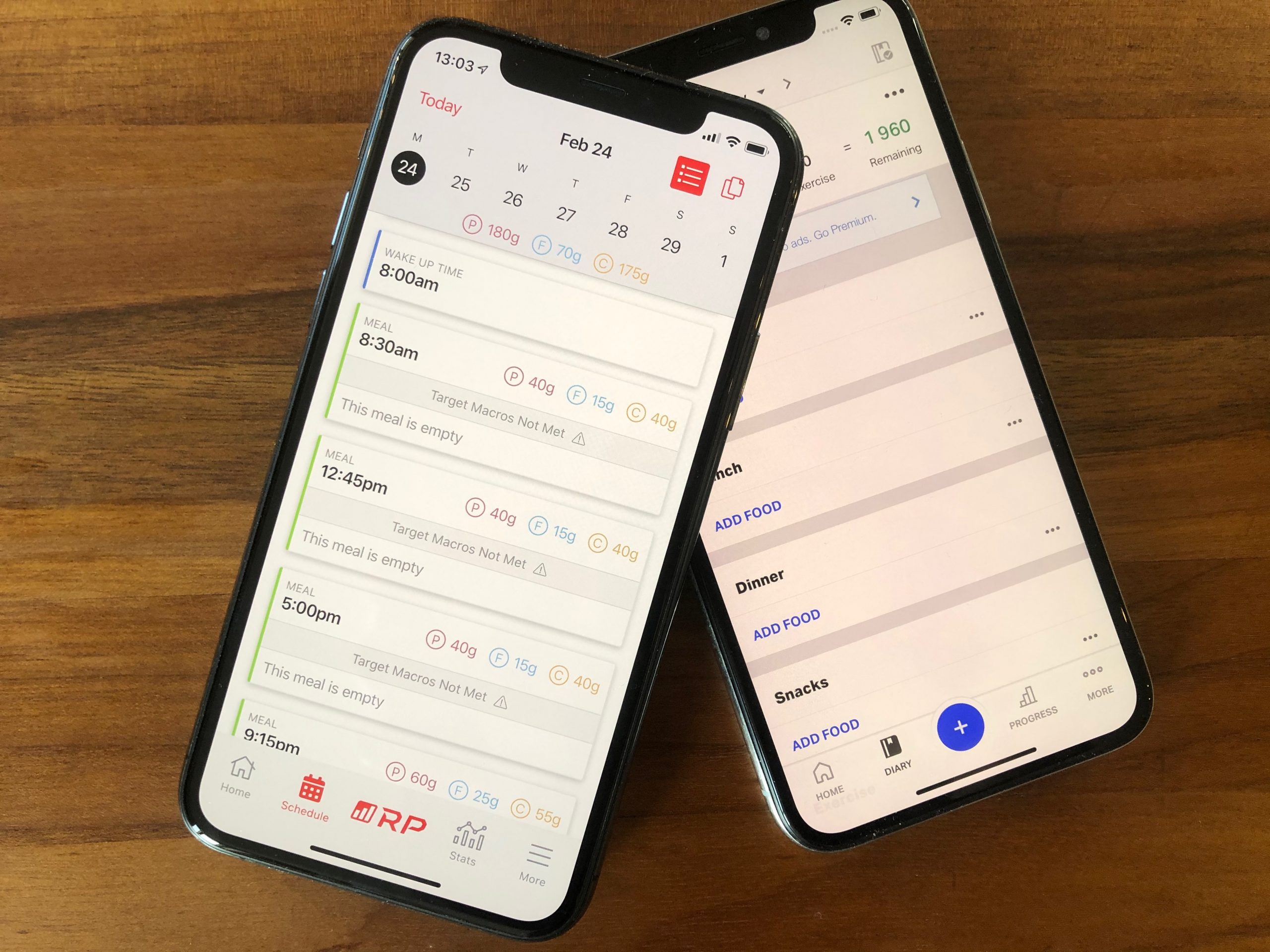



One Comment